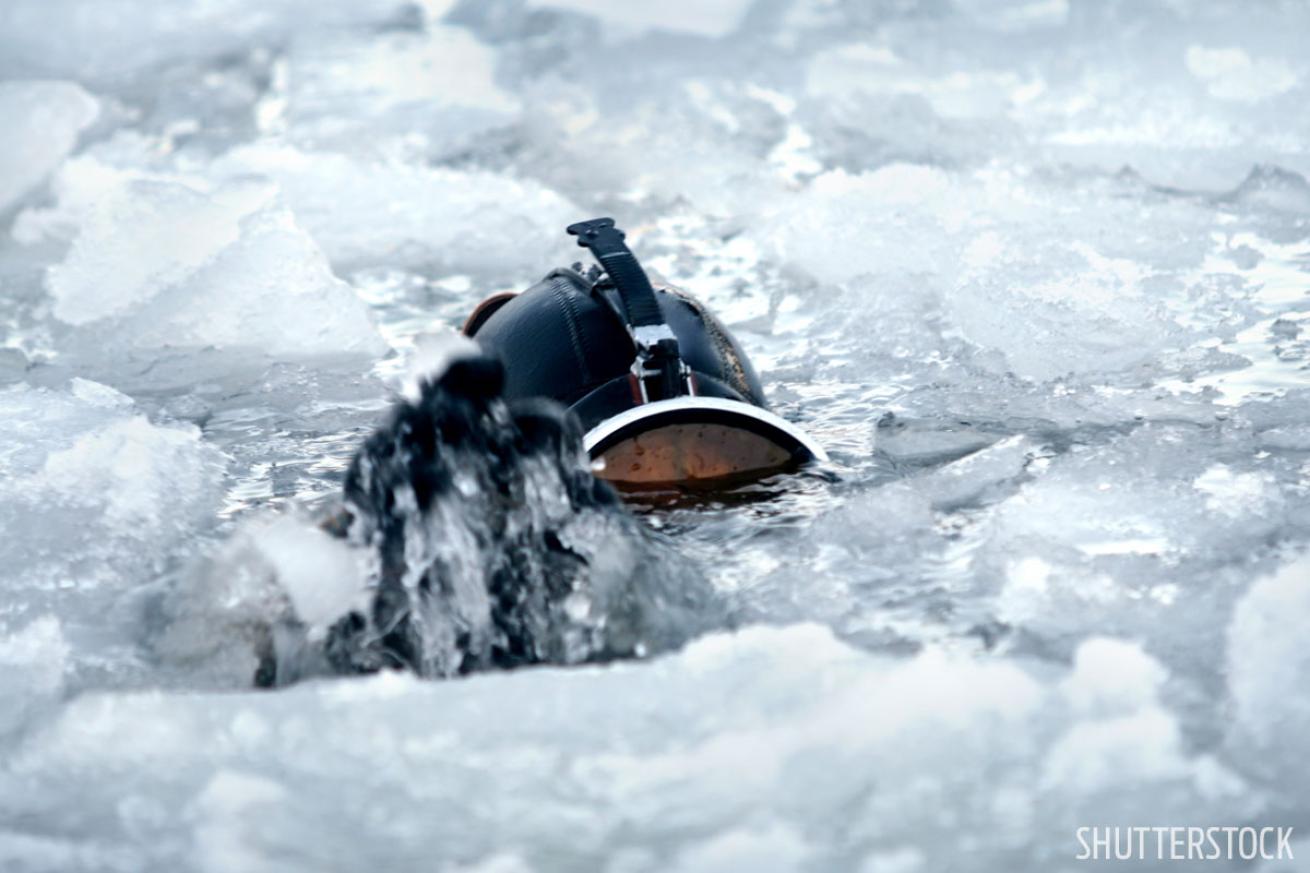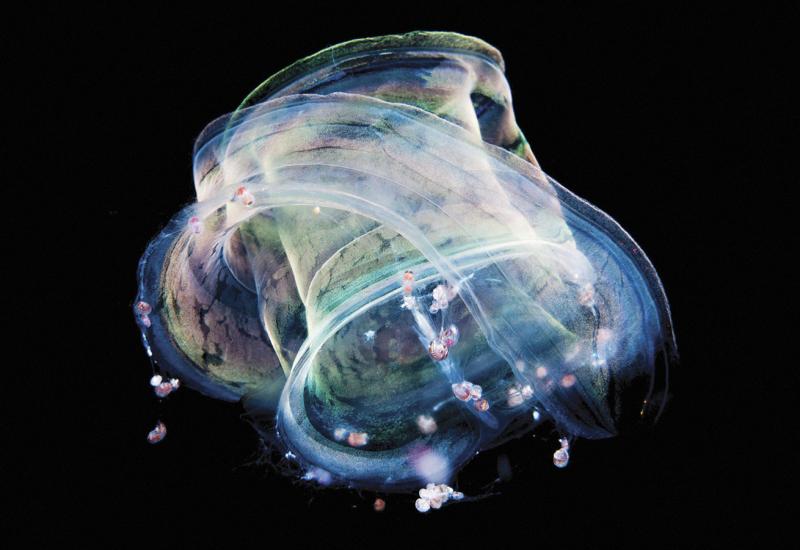Experienced Scuba Diver Dies Under The Ice

Miko MaciaszekDeath Below the Ice
Testing out new scuba diving gear leads to fatal mistakes for one experienced rescue diver.
The surface of the lake had nearly frozen over. In spite of the drysuit he was wearing and the drills they were conducting, Tom was getting tired — and cold. He wasn’t sure why, but he was getting dizzy. Tom signaled to his buddy, Steve, that he’d had enough. It was time to head to the surface. Steve agreed and began his ascent. Tom never made it.
THE DIVER
At 43, Tom was an experienced diver with technical and rescue certifications. He was part of the local volunteer fire department’s dive team, which was occasionally called on to dive in the local lake to recover bodies or evidence from crimes.
THE DIVE
The volunteer team was considering purchasing new drysuits, and they agreed that they needed to try out the gear in real conditions before they placed the order. Tom and fellow volunteer Steve took several drysuits to the lake to get a feel for the one that would best meet their needs. They planned to practice the same search-and-recovery drills in each of the suits to get a side-by-side comparison.
When they showed up at the lake, it was mostly covered with ice. Since Tom and Steve had planned to stay near the shore and away from the ice, they decided not to use a buddy line with a surface diver. There wasn’t anyone to call on short notice, and they wanted to get the evaluations done. If they had been working — trying to find a body or other evidence in the water — their dive-team protocols required them to have extra divers on-site to provide surface support and backup. At least one diver would have been on standby, fully geared up and ready to enter the water on a moment’s notice.
Since they were just testing gear, Tom and Steve decided this was more like a recreational dive and they didn’t need the extra support. Since they were using borrowed gear, the divers didn’t trim the neck and wrist seals of the suits to fit. They used them the way they arrived. Neither man expected to go very deep while they tested.
THE ACCIDENT
Tom and Steve were testing four drysuits, diving between 20 and 30 feet with each. Since they were underwater for only short stints and returned to the surface between drills, they didn’t keep track of their bottom times. As they wrapped up testing their final drysuit, Tom signaled to Steve that it was time to call it a day. Steve agreed and began swimming toward the shore while he ascended. The last time Steve turned to look for his buddy, he saw Tom following him.
Steve made it to the surface, but Tom didn’t. The last dive had taken them closer to the ice than anticipated, and since they swam horizontally during the ascent, Steve realized they were likely under the ice for part of their last drill.
Steve searched briefly for Tom from the surface. He scanned the water for signs of Tom’s bubbles but couldn’t see anything because of the ice. He then submerged, trying to get a glimpse of Tom’s dive light, but the water was murky and there was no sign of his buddy. Steve was getting cold and running low on air. He knew he couldn’t make an effective search by himself, so he returned to the surface and called for help.
As quickly as they could, the remainder of the dive team arrived and organized a search, but they knew from experience that after the delay, finding Tom alive in the cold water was nearly impossible.
Tom’s body was recovered the next day. He was under the ice.

ShutterstockGet more Lessons for Life.
ANALYSIS
Drysuit divers keep warm by wearing undergarments of varying thicknesses, depending on the dive, and inflating the suit to provide a layer of warm air around their bodies. The suits are tremendous tools for diving in frigid conditions, but they don’t provide immunity from the elements. Even with a drysuit, it’s going to get cold.
Just like diving inside a cave or a shipwreck, ice diving comes with its own set of perils. Being in an overhead environment where it’s not possible to make a direct ascent to the surface requires precautions. In this case, Tom and Steve should have postponed the dive until they were able to get surface support — either other divers or beachmasters — to keep an eye on them and help them in the event of an emergency. There also should have been a buddy line in place connecting the divers to the beachmaster. Had that been the case, when Tom didn’t make it to the shore, the beachmaster could have pulled him to the surface using the buddy line.
After recovering Tom’s body, the rescue team examined his equipment. They determined that Tom’s neck and wrist seals were too tight, putting pressure on his carotid arteries. The carotid arteries supply blood to the brain, and that blood flow is monitored by carotid sinus receptors. The body closely regulates the amount of blood heading to the brain to ensure an adequate supply of oxygen. When blood pressure is low, a person’s heart rate increases to deliver more blood. When blood pressure is high, heart rate decreases.
Any time a person’s neck is constricted by something that is too tight — like a tight-fitting hood or a drysuit neck seal — it can simulate high blood pressure in the body. When the carotid sinus receptors sense this pressure increase, they send a signal to the heart to slow down, lowering the blood pressure to avoid damage to the brain. This reaction is called the carotid sinus reflex, and the unexpected lowering of blood pressure and slowing of the heart can cause dizziness and even unconsciousness. A drop in blood pressure underwater, especially when someone is exerting energy and attempting to swim to the surface, spells trouble.
This tragedy might have been averted if Tom and Steve had taken the time to trim the neck and wrist seals in the drysuits, even if it cost them some money to replace them. More than that, if the divers had used surface support and followed their own departmental protocols for ice diving, Tom might have survived.
While there is no way to know what happened after Tom signaled that it was time to ascend, it is likely he lost consciousness. When he stopped swimming and sank, he drifted back underneath the ice.
LESSONS FOR LIFE
Prepare For the Dive: If you don’t have the proper support or equipment for the conditions, don’t make the dive.
Follow the Rules: The divers in this case were prepared for the cold, but their drysuits were not adjusted for them personally.
Listen To Your Body: Don’t attempt to “gut it out” and finish a dive if you aren’t feeling well. It is likely Tom felt dizzy before calling the dive but continued anyway to meet his objectives.
More Lessons For Life
About Lessons For Life
We're often asked if the Lessons for Life columns are based on real-life events. The answer is yes, they are. The names and locations have been removed or altered to protect identities, but these stories are meant to teach you who to handle a scuba diving emergency by learning from the mistakes other divers have made. Author Eric Douglas takes creative license on occasion for the story, but the events and, often, the communication between divers before the accident are entirely based on incident reports.










